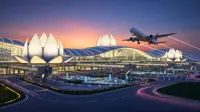Fiscal reforms are the key to India's infrastructure development
13 Apr 2015
Without further fiscal reforms, the Indian government may find it difficult to sustain the increase in public investment spending, according to a report, titled, India's Fiscal Roadblocks Could Stall Infrastructure Progress, that Standard & Poor's Ratings Services published today.
"Although India's budgetary performances have strengthened in recent years, its hard-won fiscal improvements could yet unwind because of a financial or commodity shock," said Standard & Poor's credit analyst Kim Eng Tan. "Subsidy spending is one key source of weakness, despite fuel-subsidy reforms in 2014.
Another constraint is the heavy government debt."
The report notes that the central government budget deficit in India has fallen in recent years, relative to GDP. However, the latest-year deficit reduction didn't come easy. Disappointing tax collections, especially services tax collection, dragged estimated total revenue for the fiscal year ended March 2015 6.3% below the central government's initial budget projection. The government had to cut spending by a similar proportion to prevent the budget shortfall from widening. Since the subsidy bill came in above expectations, the government made significant cuts to capital investments to bring spending down.
"The central government's willingness to cut spending to rein in the budget deficit indicates the high priority of fiscal prudence on its agenda," said Tan. "From an institutional and governance point of view, this supports the sovereign credit rating on India. However, structural fiscal weaknesses continue to be vulnerabilities of Indian sovereign creditworthiness."
The large interest payments and subsidy spending in budgetary expenditure are signs of fiscal risks because they leave little for the central government to spend at its discretion, after necessary social services expenditure. Further constraining public infrastructure financing is the government's relatively small share of GDP that it collects as revenue. This is why public investment in India has been persistently lower than that of some other developing countries. The central government appears intent to change this. It has bumped up capital spending for the fiscal year to March 2016 by more than 25 per cent, which is significantly higher than the average 5.4 per cent growth since fiscal 2011-2012.
According to Standard & Poor's, an unexpectedly sharp increase in interest rates could still raise India's budgetary interest payments. Similarly, if food and fertilizer prices are markedly different from assumed levels, the subsidy bill could be larger than expected. In either scenario, particularly if divestment targets are also not met, the government could find it necessary to cut capital spending again to meet its deficit target.
Under Standard & Poor's policies, only a Rating Committee can determine a Credit Rating Action (including a Credit Rating change, affirmation or withdrawal, Rating Outlook change, or CreditWatch action). This commentary and its subject matter have not been the subject of Rating Committee action and should not be interpreted as a change to, or affirmation of, a Credit Rating or Rating Outlook.







.webp)














